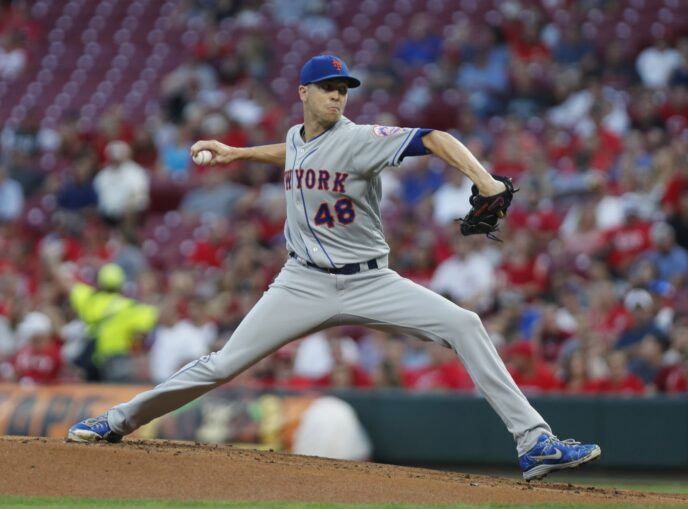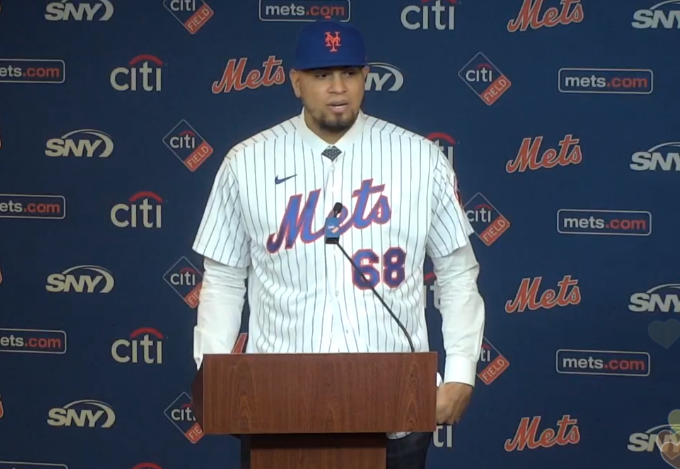
The New York Mets made a terrific run last season, utilizing a strong offense, superb starting pitching, and a whole lotta momentum to finish the year on a 46-26 run.
In simple terms, everything came together, which is something we hardly ever see in Queens. But when these situations unfold, it’s absolutely magical.
The fans have an extra sense of fanaticism and players seemingly feed off the energy. The hits fall a little more often, and the big ones come in bunches. Two-strike counts liven up the caverns of Citi Field a little bit quicker and the post-game crowd disperses a little bit slower.
We saw it happen at times last season, and it was a thing of beauty. And for a long-tortured fan base, it was desperately needed.
The contributions of Amed Rosario (.319/.351/.453, 114 wRC+ in the second half), J.D. Davis (.335/.395/.584, 156 wRC+), and Michael Conforto (.271/.366/.519, 133 wRC+) over the latter portion of season — combined with the standout performances of Pete Alonso and Jeff McNeil — pushed the Mets right up to the finish line, falling just short of their improbable postseason goal.

The starting rotation enjoyed a mostly healthy campaign all around and the team prospered down the stretch because of it.
Jacob deGrom’s become as close to automatic as a major league pitcher can be, and his 1.44 second-half ERA — oh, and his second consecutive NL Cy Young Award — proved as much.
Steven Matz (1.94 ERA from August 7 through September 11 was fourth-best in baseball over that span) showed glimpses of the oft-referenced ceiling the 28-year-old southpaw possesses and it was exciting.
Marcus Stroman (1.88 ERA over his last four starts of the season) looked to finish the year on an extremely high and quite comfortable note after a slow start in Queens.
Noah Syndergaard has all the tools to be the pitcher his advanced metrics say he should be — an elite one. But when he’s pulling up the rear of the Mets’ rotation (which he was with his 3.82 second-half ERA), while not the ideal scenario, it says a lot about the level of talent residing among the Flushing Five in 2020.
Despite losing Zack Wheeler (2.83 ERA post-ASG) to Philadelphia in free agency, the core of this rotation — as well as Rick Porcello, who, by all accounts, is looking quite crisp in Port St. Lucie — is still very much intact and incredibly good.
The Mets’ bullpen was arguably (probably, along with their defense) their Achilles heel in 2019.
The relief corps’ 4.15 ERA as a group in the second-half was slightly more palatable than the 4.99 ERA they pitched to over the course of the entire year (12th in the NL), but upgrades were absolutely necessary if this team wanted to compete in 2020.

Mets general manager Brodie Van Wagenen added former Yankees right-hander Dellin Betances, creating a four-pronged weapon at the back of the team’s bullpen in Seth Lugo, Edwin Diaz, Jeurys Familia, and Betances heading into this season. Another depth piece would have been nice, but what can you do?
Now, with a core of players one year older and that much more developed — not to mention multiple prominent publications picking the Mets to win arguably the toughest division in baseball, the NL East — this team needs to rediscover that cohesive, firing-on-all-cylinders intensity they eventually found last year very early on this season to establish themselves as a force.
Speaking with SNY’s Steve Gelbs during Sunday’s Grapefruit League broadcast from Port St. Lucie, J.D. Davis alluded to the power of a team coming together and what can be accomplished when it does.
“We always talked about last year at Spring Training that we had the opportunity where we have such a young group […] I think we just wanted to build something for the Mets,” Davis said. “Hopefully this group, we can set the standard for the Mets for a long, long time.”
If 2019’s second-half was just the beginning of this core’s development as a group, the Mets could be in for an incredibly exciting season in 2020 and beyond.













